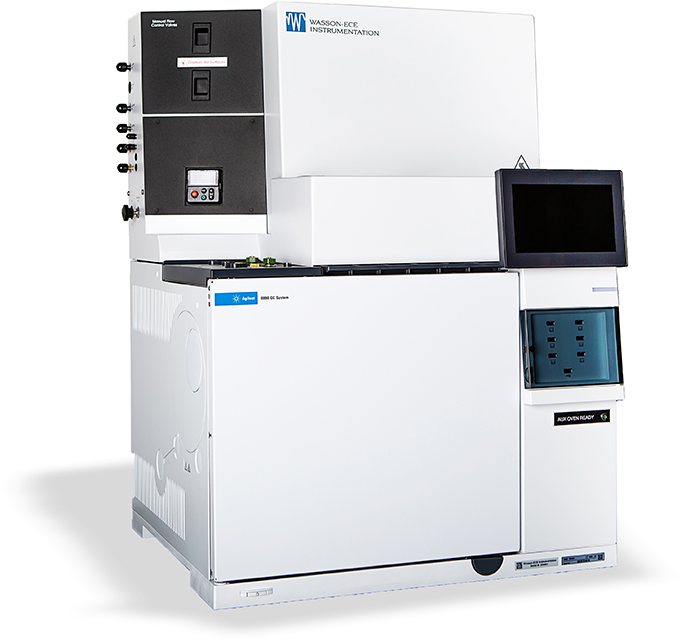



Gas Chromatography is an essential part of any modern laboratory. It is a powerful tool that utilizes fluid’s properties in order to get detailed reports on the basic compounds that constitute the sample.
The applications vary from water, pesticides, gases, to hydrocarbons and energy. Agilent’s 8890 GC system, combined with Wasson-ECE application, gets the laboratory analyst a first-class accuracy. The system and the applications form a turn-key solution to the customer with unmatched accuracy.
When it comes to LPG, Natural Gas, or Fuel analyses, The 8890 GC system with Wasson-ECE application produce the most accurate results possible. The complete system is designed, built, tested, and results will be approved by the customer’s side prior to shipping the system.
In addition to the installation and training of lab staff, with our partner, Wasson-ECE, we guarantee the best after-sales service for all supplied systems.
Key advantages
- Minimum sample preparation time
- Minimum analysis time
- Durability and stability
- Accurate and repeatable results with standards
- On-call service
Applications
Blending Stocks, LNG & Engine Fuels
- Detailed Hydrocarbon Analysis
- PIONA analysis
- Benzene, toluene, xylenes
- Sulfurs, nitriles
- Low level permanent gases - nitrogen, oxygen, carbon dioxide, methane and others
- Oxygenates - alcohols, ethers, aldehydes and ketones
Refinery Gas
- C1-20 hydrocarbon speciation
- PIONA analysis
- Ammonia
Natural Gas Liquids
- Detailed C5+ hydrocarbons
- Oxygenates - alcohols, ethers, aldehydes and ketones
- Sulfur compounds - H2S, SO2, COS, thiols and other sulfur species
- Nitriles
- Low level permanent gases - nitrogen, oxygen, carbon dioxide, methane and others
Specifications
Chromatographic performance
Retention time repeatability <0.008 % or <0.0008 minutes
Area repeatability
<0.5 % RSD
System capabilities
Two inlets, Four detectors, Four detector signals
Column oven
28 × 31 × 16 cm. Accommodates up to two 105 m × 0.530 mm id capillary columns, or two 10-ft glass packed columns (9 in. coil diameter, 1/4 in. od), or two 20-ft stainless steel packed columns (1/8 in. od). Temp range +4 to 450 °C. Goes to -80 °C with cryogenic cooling. Temperature setpoint resolution: 0.1 °C.
Electronic Pneumatics Control (EPC)
Pressure has typical control of ±0.001 psi for the range of 0 to 150 psi. Pressure setpoints may be adjusted in increments of 0.001 for the range 0.000 to 99.999 psi, and 0.01 for the range 100.00 to 150.00 psi.
S/SL
Suitable for all capillary columns (50 to 530 µm id) • Split ratios up to 7,500:1 to avoid column overload. Maximum temperature: 400 °C.
Ordering Information:
Instrument: 8890 GC with Wasson Aux Oven
Example Methods:
ASTM D2163: Standard test method for determination of hydrocarbons in liquefied petroleum (LP) gases and propane/propene mixtures by gas chromatography
ASTM D6730: Specific DHA test method for the analysis of hydrocarbon components along with the oxygenated additives that are in spark-ignition engine fuels.
ASTM D1945: Similar to ASTM D1946 for permanent gases and light hydrocarbons, but has additional hydrocarbons on the compound list
ASTM D5623: Standard Test Method for Sulfur Compounds in Light Petroleum Liquids by Gas Chromatography and Sulfur Selective Detection.
ASTM D4815: Standard Test Method for Determination of MTBE, ETBE, TAME, DIPE, tertiary-Amyl Alcohol and C1 to C4 Alcohols in Gasoline by Gas Chromatography.
